On February 13, 1542, Kathryn Howard and Jane Boleyn both faced the execution block. Their crimes included treason, adultery and not sharing past indiscretions. There are many people who look at history and believe the two deserved their fates, but is that really true? It’s worth looking into their actions and their crimes to determine whether a traitor’s death was really something they deserved.

The Executions of Kathryn Howard and Lady Jane Boleyn
On February 13, 1542, Kathryn Howard and Jane Boleyn were executed. Did they get what they deserved? Were they really guilty?
The Young Life of Kathryn Howard
Kathryn Howard didn't have the best upbringing, but can it be really blamed for her choices later in life?
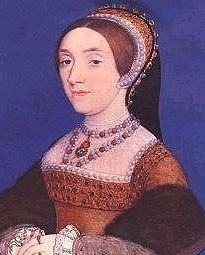 Starting with Queen Kathryn Howard, who was executed first, it’s worth looking at her upbringing and time before she met the King of England. She was one of the children of the youngest son of the Duke of Norfolk. He was always in trouble financially and couldn’t afford to keep his daughter, so Kathryn went to live with her step-grandmother, Agnes Tilney, the Dowager Duchess of Norfolk.
Starting with Queen Kathryn Howard, who was executed first, it’s worth looking at her upbringing and time before she met the King of England. She was one of the children of the youngest son of the Duke of Norfolk. He was always in trouble financially and couldn’t afford to keep his daughter, so Kathryn went to live with her step-grandmother, Agnes Tilney, the Dowager Duchess of Norfolk.
The upbringing wasn’t quite the upbringing one would expect of a Howard lady. She was surrounded by many other young women, and some of those were servants. She had the minimum education, so could read and write, but it was nothing like any of Henry VIII’s other wives, including that of her cousins and second wife Anne Boleyn.
While in her step-grandmothers care, she met Henry Mannox, her music teacher. The attention he gave her was flattering and they started some sort of relationship. However, her love (not even that) for him was fickle and she quickly moved onto another man in Agnes’ employment, Francis Dereham.
Francis later admitted that they had a sexual relationship and referred to each other as husband and wife. Kathryn admitted the latter but not that she had carnal knowledge of the man. However, there was some sort of understanding of marriage, and even in spoken terms it meant that she was betrothed and could not have married the King of England when she did.
Kathryn Howards’ Life as Queen
Kathryn became Queen of England as a teenager. She was the youngest of Henry VIII's wives and that certainly played a part in her actions.
Kathryn attended court as one of Anne of Cleves’ ladies-in-waiting. It was there that she attracted the attention of the king, much like two wives before her Anne Boleyn and Jane Seymour. The marriage to Anne of Cleves was over within six months and Henry VIII made it clear that he wanted to marry Kathryn. He was in his late 40s to early 50s, with a terrible ulcer on his leg and failing health and she was no more than 19-years-old.
However, she loved the attention and the pretty dresses and idea of power. Little did either know was that she was not suited as Queen of England. While she had a heart—and proved that when Margaret Pole was arrested and not given enough clothing to keep her warm—she didn’t quite understand the duty of being queen. She was never raised to do that.
She also had an admirer at court—and one her own age. Thomas Culpepper, who was her cousin through her mother’s side, wanted to be with her. The true nature of their relationship has never quite been proven, but there was a love letter that Kathryn sent to Thomas found in his home. Whether this was actually written by her is unknown. Their relationship was only found out because Francis Dereham made it clear that Kathryn’s affections had moved onto him.
Her age and upbringing cannot be completely to blame for her affair with Culpepper. They did meet in secret and she often told him not to admit to these meetings, even if he was giving confession. She feared that the King would find out. That doesn’t indicate that they were having an affair, but it definitely seems plausible.
It was Thomas and Kathryn who added Jane Boleyn’s actions into the mix.
Read More About Francis Dereham and Thomas Culepper
Lady Jane Boleyn and Anne Boleyn
Jane Boleyn had been a part of the Tudor court since the reign of Anne Boleyn, and she has never really had a favorable story.
To understand why many people believe Jane got everything she deserved, it is important to take a jump back in time to the reign of Anne Boleyn. Jane was Anne’s sister-in-law, married to George Boleyn. There are rumors that she helped to implicate the idea that George and Anne loved each other as more than brother and sister. Modern books, movies and TV shows like The Other Boleyn Girl and The Tudors show that Jane was a conniving woman who hated her husband’s affairs and womanizing ways.
However, it’s important to consider Jane in the Tudor period. Woman were fully reliant on men—their fathers and then their husbands. For George to receive a traitor’s death, Jane Boleyn would lose everything and her family would have likely turned away from her. Would she have really considered implying anything because she was jealous of any affairs that he may have had?
After his death, she was disgraced and needed the help of Thomas Cromwell. She pleaded to him and he managed to get her back into court as lady-in-waiting to Jane Seymour. Some historians use this as evidence that she gave evidence against her husband and sister-in-law, but it could have been the fact that she stayed silent to save her own neck. She would have been terrified and the questions would have come thick and fast. She may have even said something and Cromwell managed to twist her words.
Nobody knows for certain, but that doesn’t completely explain how she became a conspirator with Kathryn Howard and ended up losing her own head.
Jane Boleyn Acts as Go-Between
Jane Boleyn passed messages between Kathryn Howard and Thomas Culpepper so they could carry out their affair.
Jane Boleyn became a traitor when she acted as go-between for Kathryn Howard and Thomas Culpepper. They both informed their interrogators that she was involved. She would act as lookout for the two and would pass messages between them. She really had no defence against this.
According to Chapuys, the Spanish Ambassador, Jane had aggravated Kathryn’s “misdeeds the most.” She encouraged the meetings, and therefore became a traitor to the king. She never confessed specifically to these crimes when she stood on the scaffold or to the possibility of sending her husband and sister-in-law to death six years earlier, but she did admit to being a sinner. This was normal for people at the time.
Read More on Wizzley About Lady Jane Boleyn
The Executions of Kathryn Howard and Jane Boleyn
February 13, 1542 was the date for Kathryn Howard and Jane Boleyn to go to the scaffold and receive their fate.
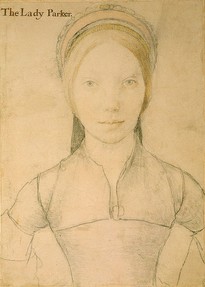 Kathryn, since she had a higher position, was the first to be executed. The night before her execution, the Archbishop of Canterbury Thomas Cranmer visited her to take her confession. She apparently didn’t give her confession due to her lack of religious beliefs and just asked that the block be brought to her. She wanted to practise laying her head on the block so that she would die with dignity.
Kathryn, since she had a higher position, was the first to be executed. The night before her execution, the Archbishop of Canterbury Thomas Cranmer visited her to take her confession. She apparently didn’t give her confession due to her lack of religious beliefs and just asked that the block be brought to her. She wanted to practise laying her head on the block so that she would die with dignity.
On the scaffold, she gave a short speech. In The Tudors, there is a line where she says “I die a Queen, but I would rather die the wife of Culpepper.” There is no evidence that she ever said those lines, and no accounts by the eyewitnesses; and that is not something they would miss out! It is very unlikely that she would have said anything of the sort.
Kathryn’s life was ended quickly and then the block was washed down. It was Jane Boleyn’s turn. Before her execution, she had suffered a nervous breakdown. Henry VIII had to have a special Act passed by Parliament as at the time it was against the law to executed an insane person. Henry VIII wanted to see Jane Boleyn dead.
When she ended her short speech, she laid her head down and was executed in one blow. Her and Kathryn’s bodies were thrown into an unmarked grave at the St. Peter ad Vincula. They were both buried close to Anne Boleyn and George Boleyn. Some of the bodies have since been found and had names put to them. These include those of Anne and Jane.
Could Kathryn Howard Have Saved Her Life?
However, Kathryn’s has never been found. It is thought that her young bones disintegrated quicker than the others and are now just part of the soil.
Did the two really get what they deserved?
You might also like
England Under the Tudors: Would King Edward VI Have Been a Goo...Edward VI reigned between 1547 and 1553 when he was just a boy. It's hard to ...
Lady Jane Boleyn: Vindictive Woman or Pawn in a Plot?Jane Boleyn is known for her part in bringing down the Boleyn faction. How mu...
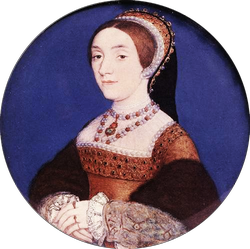
















 Alternate History: What If Mary I Had a Child?on 01/26/2015
Alternate History: What If Mary I Had a Child?on 01/26/2015
 Francis II of France Dies: Mary, Queen of Scots Returns Homeon 12/05/2014
Francis II of France Dies: Mary, Queen of Scots Returns Homeon 12/05/2014
 Does Writedge Pay? Payment Proofon 12/03/2014
Does Writedge Pay? Payment Proofon 12/03/2014
 Alternate History: What If Lady Jane Grey Was Not Deposed?on 11/11/2014
Alternate History: What If Lady Jane Grey Was Not Deposed?on 11/11/2014

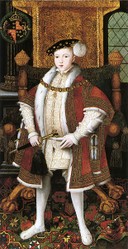
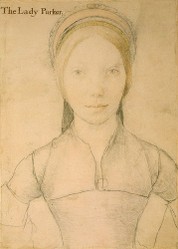
Comments
You're right; there really doesn't :(
There seems to be no end to Henry's evil acts. I am continually learning more and more of his depraved behavior.
Me too. There are times that I'd love to go back and see what life was like, but I'd need that time travel trip to be both ways so I could come back whenever I wanted. Thanks for stopping by, Jo.
I can only feel sorry for them. They seemed to have lived in a time of terror. I have seen The Other Boleyn. I am glad we don't ive in those kind of times. Interesting! Jo
I guess it depends on how much you think she was involved in Anne Boleyn's and Kathryn Howard's downfalls. Yes, all traitors were in unmarked graves, although there was something drawn up to state who was laid where, roughly. When the bodies were found during the Victorian era, the rough layout was used to determine whose body was whose, so they could be laid in marked graves. Not all the bodies were found though, but I know Anne Boleyn's, Jane Grey's and Jane Boleyn's were all found. I can't remember if George Boleyn's was off the top of my head.
I am actually one of those who feel Jane got what she deserved. I didn't know they were all buried in unmarked graves.